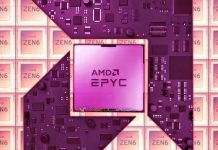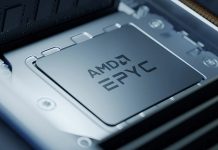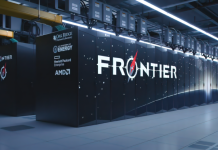AMD introduced a major update to the Radeon driver – a lot of innovations, but still without analogue DLSS
Typically, AMD will announce a major new update to its Radeon Software graphics drivers at the end of the year, but December and even the first quarter went by without such announcements. Now the company has introduced a significant update called Adrenalin 21.4.1.

The driver is no longer called Adrenalin 2020 – this year has disappeared from the name. Apparently, we will not receive a package of annual major updates but new features and technologies in Radeon Software as they become available. Unfortunately, the driver lacks the most anticipated feature – FidelityFX Super Resolution (FSR). Apparently, one should not wait for the imminent appearance of an analog of DLSS from AMD.
Adrenalin 21.4.1 brought several innovations that the community has been asking for for a long time. Most users should be glad to know that driver 21.4.1 offers 3 installation options: 1) driver only; 2) minimal installation (adds graphical interface and settings); 3) complete setup with game center, capture and broadcast tab, additional performance options, and Link. The minimal installation will still require you to download the entire driver package.
AMD also released an update to its game streaming technology – Link 4.0. Along with support for streaming to mobile devices and TVs, the company has added AMD Link for Windows. This means that users can now stream games from the main system to laptops or mini PCs.
Also, the Link Game feature allows friends to connect to the main gaming PC and stream co-op (in their respective games) as if a second controller were connected to the computer. It works both over the local network and over the Internet.
New performance monitoring software will now read performance from AMD Ryzen processors. This will allow you to monitor CPU data such as frequency, load, or temperature right in overlay mode.
The Radeon Boost technology has also been improved. Whereas previously it worked by dynamically downsampling in active scenes with fast motion, it can now improve image quality in static scenes. This is achieved by using a new mechanism that uses the Variable Rate Shading technology at the driver level for frame parts that are stationary and do not need to be recalculated. Recall: the VRS technology presented at GDC 2019, which became part of the DirectX 12 API, is similar to NVIDIA Adaptive Shading and is designed to reduce the load when rendering peripheral objects and zones (for example, a homogeneous sea of fog) by reducing the accuracy of the calculations.
Resolution-based Radeon Boost is currently supported in the following games:
- Apex Legends;
- Overwatch;
- PUBG;
- Fortnite;
- Warframe;
- Borderlands 3;
- Call of Duty: WWII;
- Destiny 2;
- GTA V;
- Rise of the Tomb Raider;
- Shadow of the Tomb Raider;
- Fallout 76;
- Sniper Elite 4;
- The Witcher 3: Wild Hunt.
VRS-based Radeon Boost requires a Radeon RX 6000 family graphics card and is supported in the following games:
- Rise of the Tomb Raider;
- Shadow of the Tomb Raider;
- Borderlands 3;
- Metro Exodus;
- Fortnite;
- Cyberpunk 2077;
- Resident Evil 3;
- Call of Duty: Modern Warfare 2019.
AMD has also significantly redesigned the interface for screen capture and broadcasting, combining them into one tab. The ability to select the screen from which to capture in multi-display configurations has been added. Improved editing and scene creation tool.
AMD also introduced the following innovations:
- improved work with color – for example, people with color perception impairments can adjust the palette;
- made the search bar more functional;
- added information about game statistics on the corresponding tab;
- added navigation buttons to easily move back and forth between the interface tabs;
- added a toggle to enable or disable the built-in web browser;
- added the ability to enable or disable all hotkeys with one click;
- Improved the AMD Crash Defender crash protection system so that the system will more often remain operational in cases where it could previously freeze;
- added full Microsoft PlayReady support for AV1 decoding;
- extended support for AMD Eyefinity to Ryzen 4000 and Ryzen 5000 mobile processors.
Finally, AMD has fixed several known issues:
- brightness flickering occurred intermittently when Radeon FreeSync is enabled and the game is set to use borderless full-screen mode.
- SteamVR was causing an application crash when connecting a VR headset to Radeon RX 500 series GPUs.
- TVs with high refresh rate and high resolution were showing artifacts when connected via HDMI on Radeon RX 6000 series cards;
- some changes to Radeon performance tuning sometimes did not take effect;
- abnormally low performance was observed with an intensive load on the processor or in heavy games;
- general overclocking profiles could override the performance settings of a particular game;
- performance may be abnormally low when running Radeon Chill;
- flickering when overlapping performance metrics in Cyberpunk 2077 on Radeon RX 6000 accelerators.
The Radeon Software Adrenalin 21.4.1 driver can be downloaded in versions for 64-bit Windows 7 or Windows 10 both from the official AMD website and the Radeon settings menu. It is dated April 20 and is intended for video cards and integrated graphics of the Radeon HD 7000 family and above.




